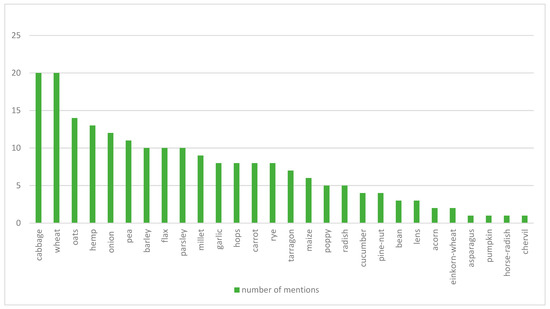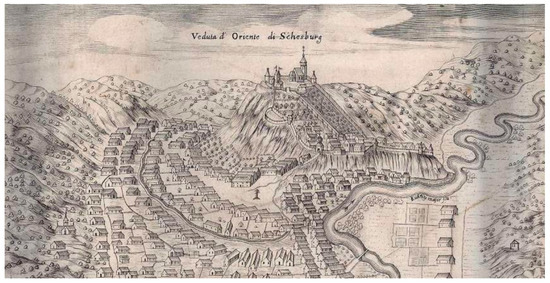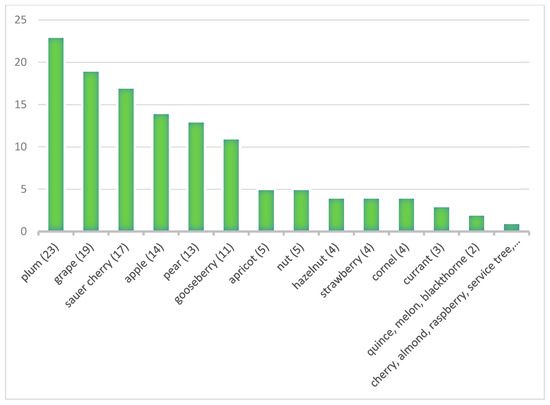You're using an outdated browser. Please upgrade to a modern browser for the best experience.
Please note this is a comparison between Version 1 by Albert Fekete and Version 2 by Catherine Yang.
The use of plants in Renaissance gardens is the subject of numerous studies and essays on botanical history in Europe. A garden unit was defined as a garden or garden section with distinct denomination and function (plant use). In the case of “Type A” sites, it can be identified as a total of three characteristic garden units on the basis of the archives, which occurred regularly in the examined Late Renaissance gardens: flower garden, vegetable garden, and orchard.
- renaissance garden art
- plant use
- landscape architecture
- historic garden
1. The Flower Garden
Mostly formal gardens planted with herbaceous flowers, often decorated with herbs, in regular order. Of the explored sites, 20 places are mentioned having flower gardens. Despite the fact that the flower garden was primarily decorative, it appears in many places together with kitchen gardens/allotments.
“The design of the flower garden depends also closely on the composition of the landscape, and is the reflection of a lifestyle, a perspective, a philosophy and a changing socio-economic environment. With their flowers, the late Renaissance gardens of the Carpathian Basin were also the gardens of reality and freedom, because of the pomp of the West and the Ottoman dependency of the East. The symbol of national freedom at this time is the garden, where in addition to the flowers, the splendor and comfort of the gazebos showed this real world and the arising thoughts aof future independence as reconcilable,”
As Csoma and Tüdős pointed out (see above), the garden must be approached as a microcosm of the landscape, and gardening must be regarded as the forerunner of landscape transformation.
The researchers analyzed the inventories of the flower gardens in numerous cases thanks to the whole plant lists made of the species found there, but occasionally the species composition was not determined on the basis of live plants but from the prepared vegetable distillates. The researchers collected 42 mentions of different flowers (with ornamental, medicinal, or condimental effects). The taxonomic identification of three of these flowers (marked with an asterisk in the Figure 15) has not been possible based on the folk nomenclature used in archival materials, so it is not known exactly what kind of flowers they are. The flower species used in Transylvanian Late Renaissance gardens are shown in Figure 15. These show that the most common flowers are rose (mentioned in 10 locations), sage, lily (nine locations), and carnation (seven locations), while some flowers, such as lilac, bellflower spur flower, etc., are found only in a single garden.

Figure 15. Flower species used during 17–18th centuries in the Transylvanian residential gardens, mentioned in the inventories and other archival materials. The taxonomic identification of the species marked with an asterisk has not been possible based on the folk nomenclature used in archival materials, so it is not known exactly what kind of flowers they are. (Source: prepared by the Authors, based on [2][3][4][5][6][7][8][9][10][11][12][13][14][15][16][17][18][19][20][21][22][23][24][25][26][27][28][45,46,47,48,49,50,51,52,53,54,55,56,57,58,59,60,61,62,63,64,65,66,67,68,69,70,71]).
With regard to the varieties of the gardens, the highest number of flower species was mentioned in the case of Komána (Comana de Jos, 25 different flower species) and Uzdiszentpéter (Sanpetru de Campie, 24 flower species). The number of described flower species largely depended on the season in which the census was taken and the depth of plant knowledge of the census taker.
2. The Vegetable Garden
In general, a section of a geometrical garden was considered, mainly with ordered plantings of vegetables. Whenever one of the planted vegetables was in a larger proportion in the garden, the garden was named after the respective vegetable variety: cabbage garden in Görgényszentimre (Gurghiu, RO, 1652) or maize garden in Branyicska (Branisca, RO, 1757). TheOur research identified vegetable gardens on 30 sites based on the descriptions. In these 30 locations, the researchers collected 30 mentions of different vegetables (and fodderplants). This highlights that the most common vegetable was the cabbage (mentioned in 20 locations), followed by some cereals and fodderplant species, e.g., wheat (20 locations), hemp (14 locations), and oats (13 locations), while some vegetables (such as pumpkin, chervil, asparagus etc.) were found only in a single garden (Figure 26).

Figure 26. Frequency of the most common vegetables, cereals and fodder plants used during the 17–18th centuries in the Transylvanian residential gardens, mentioned in the inventories and other archival materials (Source: prepared by the Authors, based on [2][3][4][5][6][7][8][9][10][11][12][13][14][15][16][17][18][19][20][21][22][23][24][25][26][27][28][45,46,47,48,49,50,51,52,53,54,55,56,57,58,59,60,61,62,63,64,65,66,67,68,69,70,71]).
3. The Orchard
A garden area where mostly fruit trees were planted was considered. Similar to the vegetable garden, the name of the garden area could also be the name of the dominant fruit variety here: sour cherry garden in Uzdiszentpéter (Sânpetru de Câmpie, RO, 1679), apple garden in Csíkkozmás (Cozmeni, RO, 1688), plum tree garden in Görgényszentimre (Gurghiu, RO, 1652). Orchards are mentioned in 39 locations in the descriptions. Orchards (or fruit trees) were very often found in flower garden compartiments, too. This category includes the following sites: Négerfalva (Negrilesti, RO, 1697), Borberek (Vurpar, RO 1701), Szásznádas (Nadasul Sasesc, RO 1712), Szászcsanád (Cenade, RO 1736) Marosszentkirály (Sancraiu de Mures, RO, 1753)(B. Nagy, 1970), Sárpatak (Sapartoc, RO, 1736), Nagyercse (Ercea, RO, 1750), Vajdahunyad (Hunedoara, RO, 1681), Branyicska (Branisca, RO, 1726), Szentbenedek (Manastirea, RO, 1784), and Mezőörményes (Urmenis, RO, 1721).
Figure 37 shows a terraced orchard garden on the castle hill from Segesvár (Sighisoara, RO), and some compartmented gardens organized in the manor courtyards (bottom, right), on the river shore, at the end of 17th century.

During the research, the researchers found references to a total of 21 different fruit varieties in 39 residence gardens. The fruit varieties mentioned in contemporary inventariums and their frequency are shown in Figure 48 and Table 12 for each location. These show that the most popular fruits are plums (mentioned in 23 locations), grapes (19 locations), and sour cherries (17 locations). According to records, the rarest fruits are rowan, quince, cherry, almond, and raspberry. At the same time, Mediterranean plants are also included in the inventarium at two locations: lemon in Uzdiszentpéter and olive tree in Fogaras.

Figure 48. Fruit species mentioned in archival materials and its frequency in the gardens (Source: prepared by the Authors, based on [2][3][4][5][6][7][8][9][10][11][12][13][14][15][16][17][18][19][20][21][22][23][24][25][26][27][28][45,46,47,48,49,50,51,52,53,54,55,56,57,58,59,60,61,62,63,64,65,66,67,68,69,70,71]).
Table 12. List of residential gardens with fruit gardens with a specification of the used fruit varieties (Source: prepared by the Authors, based on [2][3][4][5][6][7][8][9][10][11][12][13][14][15][16][17][18][19][20][21][22][23][24][25][26][27][28][45,46,47,48,49,50,51,52,53,54,55,56,57,58,59,60,61,62,63,64,65,66,67,68,69,70,71]).
| No | Location | Data (Year) | Apple | Apricot | Sorb | Quince | Lemon | Melon | Nut | Strawberry | Gooseberry | Cherry | Blackthorne | Pear | Almond | Raspberry | Sauercherry | Hazelnut | Oil Tree | Cornel | Plum | Grape | Currant |
|---|---|---|---|---|---|---|---|---|---|---|---|---|---|---|---|---|---|---|---|---|---|---|---|
| 1 | Kisbarcsa | 1624 | x | ||||||||||||||||||||
| 2 | Fogaras | 1632 | x | x | x | x | x | x | |||||||||||||||
| 3 | Siménfalva | 1636 | x | x | x | ||||||||||||||||||
| 4 | Tasnád | 1644 | x | x | x | x | x | ||||||||||||||||
| 5 | Nagyteremi | 1647 | x | ||||||||||||||||||||
| 6 | Királyfalva | 1647 | |||||||||||||||||||||
| 7 | Meggykerék | 1647 | |||||||||||||||||||||
| 8 | Drassó | 1647 | x | ||||||||||||||||||||
| 9 | Marosvécs | 1648 | x | x | x | x | x | x | |||||||||||||||
| 10 | Komána | 1648 | x | x | x | x | x | x | x | x | |||||||||||||
| 11 | Görgény | 1652 | x | x | |||||||||||||||||||
| 12 | Gerend | 1652 | x | x | x | x | |||||||||||||||||
| 13 | Búzábocsárd | 1658 | x | ||||||||||||||||||||
| 14 | Mezőszengyel | 1656 | |||||||||||||||||||||
| 15 | Szurdok | 1657 | x | ||||||||||||||||||||
| 16 | Bethlen | 1661 | x | x | |||||||||||||||||||
| 17 | Mezőbodon | 1679 | x | x | x | ||||||||||||||||||
| 18 | Uzdiszentpéter | 1679 | x | x | x | x | x | x | x | x | x | ||||||||||||
| 19 | Nagysajó | 1681 | x | x | x | x | x | x | x | x | x | x | |||||||||||
| 20 | Oprakercisóra | 1683 | x | ||||||||||||||||||||
| 21 | Csíkkozmás | 1688 | x | x | x | ||||||||||||||||||
| 22 | Nagybún | 1692 | x | x | x | x | |||||||||||||||||
| 23 | Borberek | 1694 | x | x | x | x | x | x | x | x | |||||||||||||
| 24 | Kővár | 1694 | x | ||||||||||||||||||||
| 25 | Vajdahunyad | 1695 | x | ||||||||||||||||||||
| 26 | Szentbenedek | 1696 | x | x | x | x | x | x | |||||||||||||||
| 27 | Egeres | 1699 | x | x | x | x | x | x | |||||||||||||||
| 28 | Zentelke | 1715 | x | ||||||||||||||||||||
| 29 | Grid | 1716 | x | x | |||||||||||||||||||
| 30 | Mezőörményes | 1721 | x | x | x | x | x | x | x | x | x | ||||||||||||
| 31 | Koronka | 1724 | x | x | x | ||||||||||||||||||
| 32 | Marosszentkirály | 1725 | x | x | |||||||||||||||||||
| 33 | Aranykút | 1728 | x | x | x | x | x | x | x | x | x | ||||||||||||
| 34 | Bonchida | 1736 | x | x | x | x | |||||||||||||||||
| 35 | Gernyeszeg | 1751 | x | x | x | ||||||||||||||||||
| 36 | Branyicska | 1757 | x | x | x | x | |||||||||||||||||
| 37 | Szilágycsehi | 17. c. | x | ||||||||||||||||||||
| 38 | Gyulafehérvár | 17. c. | x | x | |||||||||||||||||||
| 39 | Ebesfalva | 17. c. | x | x | |||||||||||||||||||
| TOTAL Number | 14 | 5 | 1 | 2 | 1 | 2 | 5 | 4 | 11 | 1 | 2 | 13 | 1 | 1 | 17 | 4 | 1 | 4 | 23 | 19 | 3 | ||
